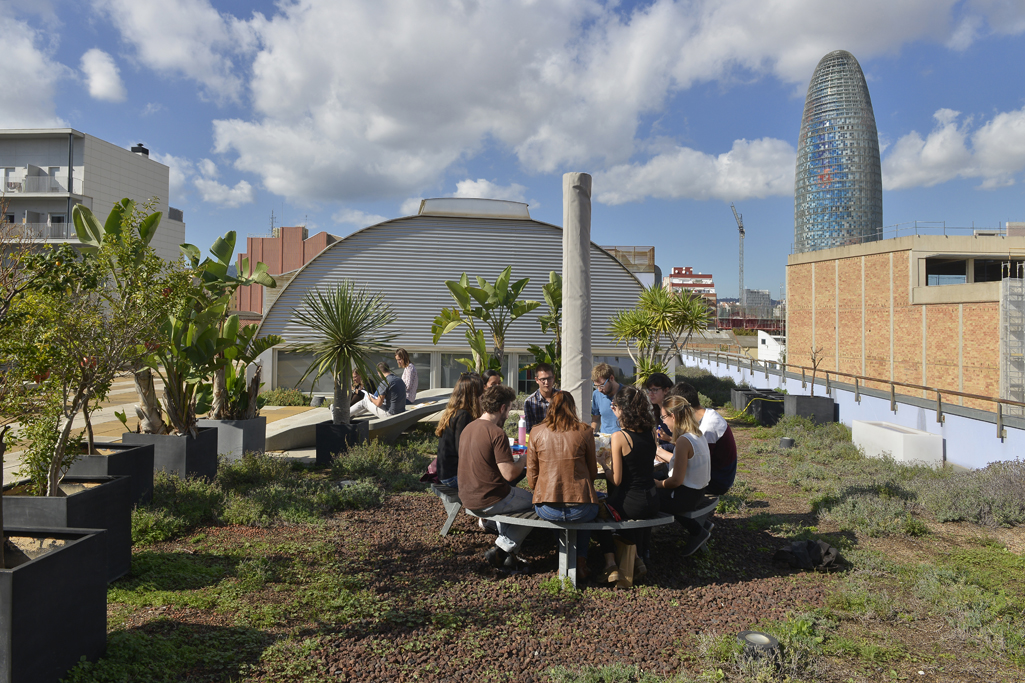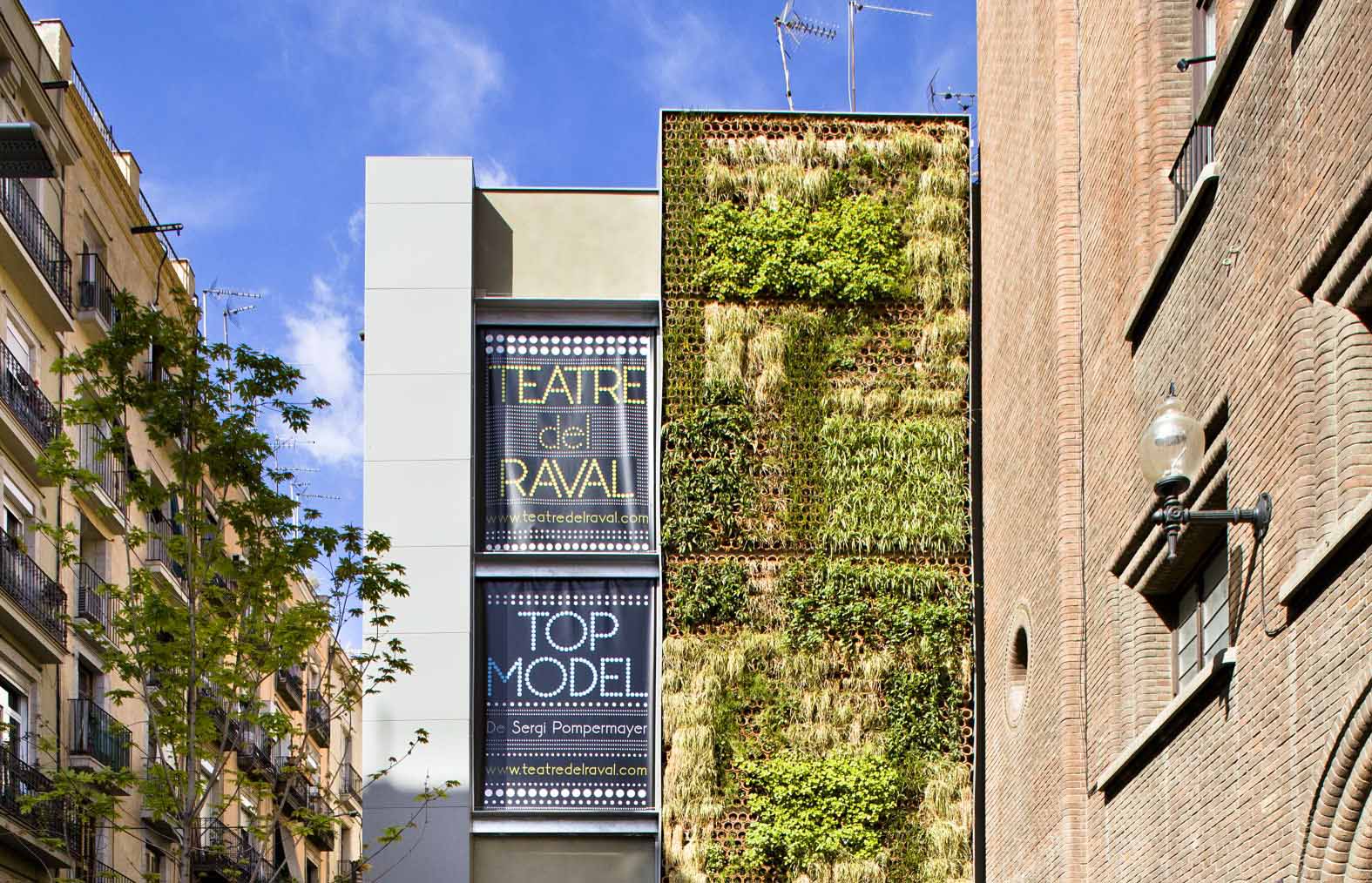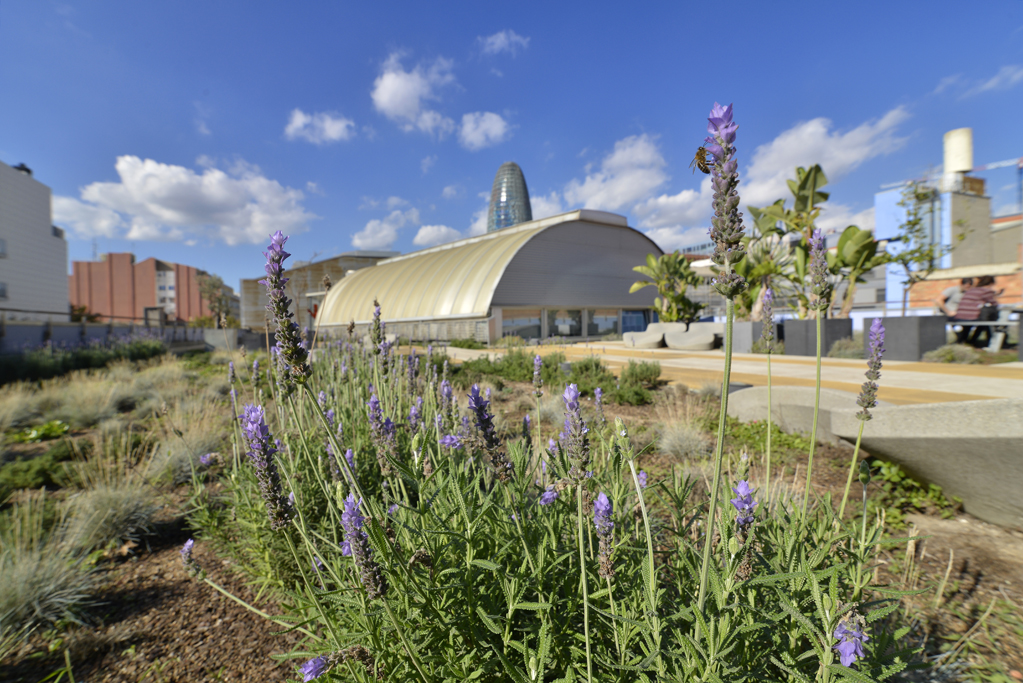Other green spaces in the city
Green hubs and squares
Barcelona is expanding the greenery in the centre of the urban fabric, in the city's streets and squares, to offer peaceful, friendly and safe spaces for the city's citizens. Spaces to relax and socialise. Spaces where people and nature converge.
These urban spaces are designed to prioritise the passage of pedestrians and to create areas of rest and relaxation where greenery can grow. Streets and squares with wider pavements, more vegetation and more space to meet and play.
The city is being transformed to create a greener and healthier environment.
More streets and squares with green spaces.
New tree and shrub species are being planted, and climate shelters are being set up to combat extreme temperatures.
Older people and children are the focus of attention, with shady spots, places to sit and spaces to stroll, cycle, play and enjoy the local shops.
Green roofs, walls and dividing walls
Many buildings in Barcelona use the excess space on roofs, walls and dividing walls and fill it with greenery and nature.
These initiatives not only improve urban aesthetics and the quality of life of residents, but also contribute to mitigating the effects of climate change, provide spaces for urban biodiversity and promote the energy efficiency of buildings.
Barcelona is a city where roofs, terrace roofs and lightwells are an underused resource. Therefore, making them useful and rehabilitating them has many advantages:
- Socially, it allows the local population to make better use of terrace roofs.
- Environmentally, it increases greenery and biodiversity, reduces energy demand and promotes energy production and the use of natural resources.
What are they?
Green roofs

These are terrace roofs or roofs of buildings that are covered with vegetation. Spaces that can have plants, flowers and even small gardens. Green roofs help to improve air quality, reduce heat and provide additional green spaces.
Green walls

These are walls covered with plants that are grown on vertical structures. They can be inside or outside buildings and help to improve air quality, improve the thermal insulation of buildings and improve the urban environment. They can be created using gardening systems, metallic trellises or other supports to hold the plants.
Green dividing walls

These are walls shared between two properties that can be covered with vegetation. As with green walls, green dividing walls contribute to improving the urban environment, provide acoustic and thermal insulation and can serve as a habitat for urban fauna. Moreover, they help to create a more pleasant and aesthetically appealing atmosphere.
Consult the Guide to living terrace roofs and green roofs
The aim of the guide is to promote and aid the process of rediscovering these spaces that can help to improve environmental quality, as they regulate the urban and building climate, reduce atmospheric pollution, retain water and house flora and fauna.



